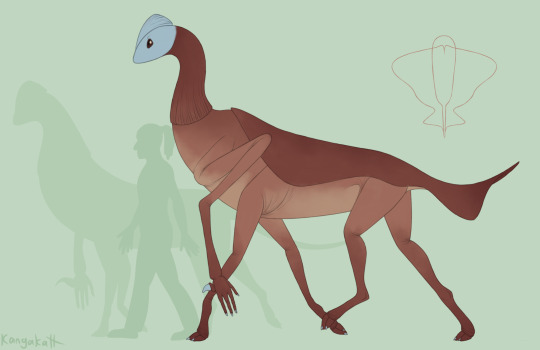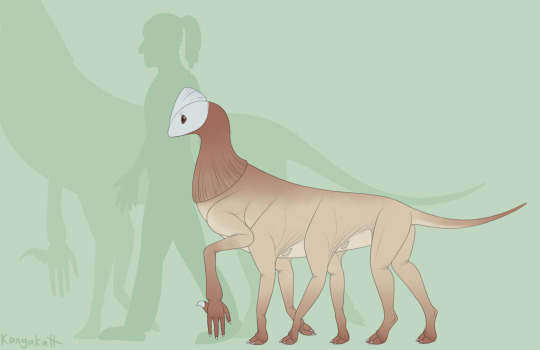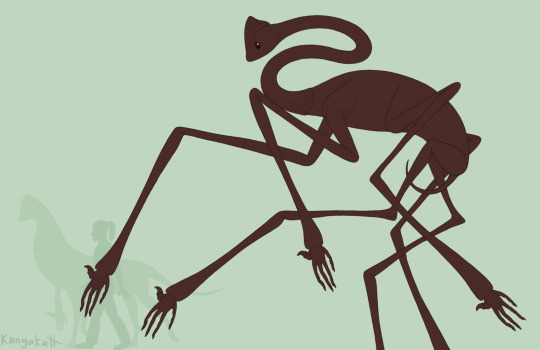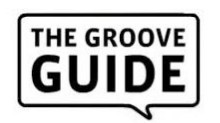#xenosapien
Explore tagged Tumblr posts
Text

Formids
Common names in English:
Formids, T34s, skullcrawlers, skullants, fellow monkeys, nightmares
Binomial name:
Xenosapiens Sp. (Wise aliens)
X. tescacolonus (tundra settler wise aliens)
X. tescaperegrinus (tundra wanderer wise aliens)
X. hesperomons (western mountain wise aliens)
X. orientomons (eastern mountain wise aliens)
X. tescagigans (tundra giant wise aliens)
X. silvagigans (forest giant wise aliens)
X. campusincola (plains dwelling wise aliens)
X. boreasilva (northern forest wise aliens)
X. notosilva (southern forest wise aliens)
X. insula (island wise aliens)
X. hesperosilva (western forest wise aliens)
X. orientosilva (eastern forest wise aliens)
Description:
Formids are a genus of centauric hexapods and were the first alien sophonts encountered by Terrans.
They posses an endoskeleton primarily consisting of sodium chloride, with a pair of vertebrae-like structures each containing a notochord. Each limb girdle is made up of three bones holding the first segment of the limb and attached to the twin spines. Beneath each girdle is a trio of large plates derived from osteoderms, serving as both protection for the organs and structural support. Each limb is made up of four segments, with a ball and socket joint at the base of a single bones followed by two pairs of parallel bones which in turn connect to three wrist bones. Four digits attach to the wrist, with 3 internal bones, four external bones and a claw in each finger. The hands represent the more basal zygodactyl structure of their ancestors, where as the feet have become digitigrade to better support movement on the ground.
The skull is made up of a solid block containing the brain to which 18 jaws are attached. In the digestive system, two ancestral pairs have fused into the dorsal and ventral primary jaws, two pairs evolved into the masticatory jaws used to help break up food and push it down the throat and a pair into molar jaws used to crush and grind food. Food then passes into a stomach within the rib cage of the second limb girdle before passing into an intestine-like absorption structure. The respiratory system is made up of their iconic through-lung with an anterior and posterior air intake and a hind air vent. Taking in air through a nostril on the outside of the dorsal primary jaw it then flows into the olfactory chamber containing the olfactory jaw before being drawn past the anterior valve jaw into the cephalic lung by the diaphragm jaw. It is then pumped primary anterior lung before either being expelled from the posterior air intake through a voice-box like structure or transferred to the secondary anterior lung, where it is drawn into the posterior lung before being expelled from the respiratory vent. The other jaws of the skull are made up by the two pair of eyes, two pairs of eyelids, a pair of structures similar to the mammalian inner ear, a pair of antennae, two pairs of stridulatory jaws and a pair of tridactyl cephalic limbs, with each digit being derived from an ancestral tooth.
Formids have two circulatory systems. The primary circulatory system is pumped by a single heart in the rib cage of the first limb girdle and transports oxygen carrying blood cells, most immune cells, inorganic ions and hormones dissolved in water. The secondary circulatory system is pumped by a trio of hearts in the rib cage of the third limb girdle and transports simple sugars, amino acids, lipids and immune cells dissolved in water.
Formids also posses a series of kidney-like structures in the rib cage of the third limb girdle closely resembling the malpighian tubules of Terran invertabrates whilst a pair of liver-like manufactory organs between the second and third limb girdles.
They are covered in a thin layer of translucent, mildly iridescent keratinous structures analogous to mammalian fur and derived from ancestral osteoderms, allowing the colour of the skin to be seen underneath. This was key in ancestral collumacephala to both allow them to retain heat but also for their chromatophores to be visible through their integument. In formids and their relatives many of these chromatophores have been lost alongside much of their UV vision in a burrowing ancestor, in addition the development of iridescence common in fossorial species. In modern formids functional chromatophores remain solely on the skull where they are used to convey emotions, although the introduction of ink into the vestigial chromatophores of the body has been and continues to be used as a for, of self expression through fluid tattoos, however it is a very delicate process and the tattoos fade as the cells die. Most emphasised in species from the southern continent but common to all formids is the development of a winter coat should below average temperatures be encountered for a long enough period, being shed should the temperatures warm.
Like a majority of cetocnidarians formids are hermaphrodites. Typically a single infant is born from each parent, typically in early spring, clinging to the back where it feeds on a specialised organ developed from the ancestral secondary circulatory system. Born blind and furless, they feed from this organ for roughly half a year before developing fur and being weaned, however they still cling to their parents fur. After another half year of their eyes have opened fully and they under grow a rapid stage of development, being fully capable runners two months, however their brains are still far below adult capacity and are highly instinctual. After another year they undergo a second growth spurt where they rapidly gain cognitive abilities equivalent to a human child. Typical formids are most often considered mature in the modern day by sixteen years old and independent from parents at around twenty, however the tundra species are often a year or two behind their northern relatives and the two giant species may not be considered mature until their early twenties. Despite their neotenic features, Xenosapiens insula has a similar rate of development to its mainland relatives.
Ancestrally formids typically lived in clans made up of immediate family, members from neighbouring clans and wandering individuals. Despite the sedentary nature of many of these communities (the most major exclusion being two tundra species and many clans from the two plains species), these wanderers maintained connections between clans and allowed the spread of genetics and ideas, hence how almost all modern species of Xenosapiens can still produce fertile offspring, although this comparative isolation and long timespan has lead to significantly greater variation than amongst Homo.
Despite having entered space shortly before humanity, Xenosapiens is a much older clade than genus Homo, with some estimates placing their common ancestor as far back as six million years ago, with some modern species existing as far back as two million years ago. For the majority of their history, formids have been isolated to the twin southern continents and some surrounding islands, though a small population of appears to have reached the westernmost island of the shattered continent after their ships got caught in the westerly current upon which they survived for a minimum of several hundred years before seemingly going locally extinct, although reports of shipwrecked sailors and wild men joining later colonies have been thought be some to represent the last of this distinct culture. Throughout their history formids have used a variety of complex tools constructed from wood, stone and bones, independently domesticating a variety of fauna and flora and living as nomads or agricultural communities as slowly trades of raw materials and manufactured goods developed across the continent, only becoming global a short few hundred years before the first formids flung themselves into the stars to land upon their twin moons.
The first sophonts the formids encountered were the Terrans, when two scientific missions to study an unusual solar system encountered each other. Following this formids joined the Terrans (and unknowingly a number of other sophont species) in the Great War, the conclusion of which lead to the formation of the USS (Union of Sophont Species).
2 notes
·
View notes
Text
So I Bought A Spaceship Episode 6: Not My Problem
Theringal rubbed his frontmost forelimbs against his compound eyes. By the greater celestials it was boring here. Gamma-B22 was at the cercus end of nowhere, visited only by the most debased freighters and fringe runners imaginable. The station itself probably wouldn’t be here at all if it hadn’t served the dual function of being a warning beacon to this end of the quarantine zone. Theringal contemplated the extra hazard pay he was receiving and decided that it wasn’t really enough to be worth dealing with the “regulars” and other trash that floated in. A red light flashed on his console and he scuttled over to press the corresponding button.
“Acknowledging handshake, Station Gamma-B22 awaiting reply.” he buzzed, rotating his body slightly to bring the visual display into view. What he saw there was one of the ugliest xenosapiens he’d ever encountered. It was clearly some form of mammalian, although how big was always hard to judge via view screens. It was obviously suffering from one of the nastier parasitic lice such hairy creatures could contract as it lacked hair on almost its entire surface. Greater celestials, it was also bipedal. Theringal suppressed a shudder. Bipedal xenosapien always looked maimed to the multi-limbed insectoid, and none of them could grow back!
Theringal was brought back from his horrified musings by the sound of the xenosapien speaking. This at least was pleasant, the creature had a lilting, almost musical sound to its speech patterns that brought some small amount of comfort to the startled insectoid. It was apparently pretty uncommon for this area too, as the omnitranslators took a few moments to interpret the solely auditory communications into something more understandable to his kind. When it did it was pretty obvious that whatever this thing was, it was lost.
“Um, hello? Uh, this is the captain of Stacy-”
“That’s not the name of the ship.”
“Then what is?”
“It doesn’t have one, you didn’t pick one yet.”
“Oh,” the xenosapient straightened up and looked directly into the recorder. “This is Captain Gemma of the Mechkitty II. I’m, uh, looking for some work? Kinda need some cash and don’t know where else to go.”
“You’re not allowed to talk next time.”
The xenosapient glared up at something, then glanced back at the camera. “Hey, why is this thing showing me a picture of a beetle?”
“That’s not a beetle, it’s one of The Multitude and it’s not a picture, it’s a live feed to the bridge controller.”
“Why isn’t it moving?”
“I would imagine it is likely the first time it has seen someone like you. I recommend wearing a visor next time.”
“Why?”
Theringal waved one of its forelimbs in a desperate attempt to get the stream of words to end.
“Awww, look. It’s waving at us.”
“We have several freighter contracts available,” Theringal cut in before the tidal wave could wash over his small island of sanity, “two are bulk carrier orders, mostly base metals and halogens, and one info dump order.” The info dump order was a class 2 restricted contract, but he’d have given the horrible little biped the station's grav-teather if it made it go away faster.
“Captain, we currently do not have enough spare power for high weight cargos. Might I suggest the halogen or the info dump?”
“What’s an info dump?”
“Bulk data, FTL data transfer is prohibitively expensive so most remote stations turn in sensor data via bulk shipments at regular intervals.”
“Ooo, let's do that one. Sounds like it’s important, and important is expensive.”
Theringal internally winced but began typing away at his console. Just get it done and get them gone. He told himself. “Sending packet and payment chit data now.”
“Data received, ending transmission.”
“Hey, I’m the captain don’t-”
“Ending transmission” Theringal hit the communications button with indecent haste. After a few calming breaths and a short hymn to the greater celestials, he rotated to watch the ship depart on his long range scanner. When the dot finally disappeared into the void he bobbed his antenna and turned back to his paperwork. Maybe boring really was better.
Previous Episode
0 notes
Photo

This is a request i've done for a friend on furaffinity, only took me like 5 months or something to finish...yeay I usually don't do request, I can draw something for you, but only if you are my friend and only if one of my characters can be in this art. Yea i know, sound strange but i need to somehow popularize my own characters, right? And don't ask why there is a Combine insignia on the background, it's the friend's wish.
2 notes
·
View notes
Photo

#cephaliccarnage Gracias Maryland, #epicasfuck ojalá se vuelva hacer.... Hasta aquí mi reporte Joaquin. #xenosapien #anomalies #lucidinterval #misledbycertainty #exploitingdysfunction #dyingwillbethedeathofme #touchedbyanangel #killforweed #endlesscycleofviolence #deathmetal #grindcore #grind #marylanddeathfest2022 #marylanddeathfest #mdf #mdf22 https://www.instagram.com/p/CeNOYnsD2m6/?igshid=NGJjMDIxMWI=
#cephaliccarnage#epicasfuck#xenosapien#anomalies#lucidinterval#misledbycertainty#exploitingdysfunction#dyingwillbethedeathofme#touchedbyanangel#killforweed#endlesscycleofviolence#deathmetal#grindcore#grind#marylanddeathfest2022#marylanddeathfest#mdf#mdf22
0 notes
Photo

Xenosapien Cephalic Carnage
41 notes
·
View notes
Text
Concept sketches for the ULE! Sorry for the long post.
Most nations in the ULE prefer to create habitats or terraform planets specifically to their biological needs. This is useful, because it means that their citizens can travel to any part of the nation- habitat, planet, or moon- without suffering severe medical effects. However, this takes lots of time and resources, and as many planets can’t accommodate certain organisms even with terraforming, it ultimately limits the available space. So, the Eina jarn have taken a different approach.
The Eina jarn are a majority-Azi lana nation with a range of different territories and ways of life. Their ownership of one of only three dyson spheres in the area makes them a powerful faction. Notably, when they colonise new areas, they will genetically modify their own citizens to cope with the new environment, instead of the other way around. They have created three new varieties of Azi lana in total, all of which cannot sire children with each other or with the unmodified Xenosapiens alana, and so are usually considered entirely separate species.

X. hanwena (casually glewens) is a species of Azi lana modified to live on the moon Hanwen. Although the moon has been terraformed to hold oxygen in its atmosphere, it is half the size of Earth’s moon, and so glewens have been created for life under extremely low gravity.
To cope with this, their vascular systems, muscles, and skeletons have all been fundamentally altered, to the point where their organs would be crushed if they were to travel to the Azi lana homeplanet, Gi.
To take full advantage of the low gravity, they have also been given large membranes with which they can glide short distances. The membranes’ skin and muscle is supported by long, thin extensions of their bifurcated neural spines.

X. Larmwaa (casually engwells) is a species created to live on the super-earth Larmwa. This high-gravity planet has no oxygen in its atmosphere, and so engwells usually live in underground habitats.
To live under gravity that would easily crush others, these people have strong, light bones, sturdy muscles, and a fast, powerful heart. They also have an extra pair of legs, and their arms have been modified to easily bear weight, meaning they have a maximum of eight limbs to support themselves with.
Like humans, they can live in lower-gravity environments, but doing so for extended periods of time leads to physical changes like muscle atrophy and eventually severe medical effects.

X. Einaa (casually arjenjaals) have been modified to live inside the dyson sphere orbiting their star, Eina yerda. They are born and raised to carry out important duties, like maintenance of the dyson sphere, as well as worship and appeasement of the Eina jarn’s god- the star itself.
Arjenjaals live and work in zero-gravity. Their vascular and musculoskeletal systems, as well as their development period, have been highly modified- again, their organs would be crushed by higher gravity environments. They navigate the long, thin rooms of their home by pulling and pushing on walls and handles with their spindly limbs.
Though thick habitat walls prevent much solar radiation from reaching the arjenjaals, they are still regularly bathed in amounts that would kill a lesser organism. To cope, their DNA is hardy, easily repaired, and stored in double the amount of chromosomes. Even still, arjenjaals live tragically short lives.
#ulexemp#speculative biology#speculative evolution#worldbuilding#science fiction#spec evo#scifi#xenobiology
25 notes
·
View notes
Text
The Groove Guide - Lenzig Leal (Cephalic Carnage)

"Alcohol makes you do some crazy things. One time in Austria we played a show and this guy was all drink, laid on the ground and twelve of us poured alcohol in his mouth at once. Asian guy - we called him Kim Jun Drunk. Cool Drunk." The laid-back drawl of Cephalic Carnage's Lenzig Leal indicates that during the band's seventeen-year history they've done some heavy things. "I tagged out passed out people once on a train. One side looked like Gene Simmons, the other was normal. I drew pupils on their eyelids - morbid." As a throng of laughter occurs in the background of the phone call.
Dropping into the conversation about getting voice-mail messages a few times from Mastodon's Brent Hinds and both sharing incredible critical praise for their style of music, Cephalic Carnage's lyrical content about smoking weed in their earlier works would instantly draw comparisons to the work's of Phil Anselmo's 'Down'." Too many people make comparisons like that man," Lenzig declaring that the band were more close to the works of "Bongzilla - back when they were doing stuff they'd book out tours for us and get super weeds for free..."
Cephalic Carnage make no qualms about their substance use - the group dubbed themselves "Hydrogrind", an amalgamation of grindcore with marijuana themes, and during the interview Lenzig discusses if we were to meet up when they play Auckland we should "smoke a bowl and talk about the roots of metal man - UFO, Jefferson Airplane." "The original intention back then was, like, jazz parts and weird things like that. We had to be clever and call it 'Rocky Mountain Hydrogrind.' Smoking the best hydro weed and playing grind with death elements seems to be opened mindedness, super and represent the area it was from and it works. Some days we're happy and healthy to smoke a bowl, I prefer a smoke over getting drunk. We all smoke, but not as much as others - we didn't want to get gimmicky"
Though marijuana is a large theme within the music of the group the group's latest effort, 'Xenosapien', verges on the themes of extra-terrestrial life, in particular 'Grays' which were alleged to have crashed in Roswell. When posed with the question if he there was a general belief in the band of other life forms, Lenzig paused, then finally admitted "I dunno. I think you got to be ignorant if you think we're the only thing in existence. A lot of science and scary stories that brew up in my mind, and I feel that it's a little much more than that, y'know?" In regards to some of the lyrics, which he described for one moment a set involving "Cooler aliens raping, part of what they are is that", Lenzig reflects on how the scene takes itself too seriously. "End of the day, you got to smile, entertain and do what you gotta do to entertain. We're never of the idea of being better than anyone else and are above that. I don't see the logic in that"
With the metal scene over in New Zealand and the United Kingdom under siege, one has to wonder what it's like in the United States for the once 'hip' genre. "Everyday in American, you can get up and watch metal on TV, just really killer programmes for every style of metal and rock man. I think metal is more popular in America than anywhere else in the world. Fans who were into Slipknot helped it get re-popular in the US and it doesn't seem to be slowing down.”
0 notes
Photo

Xenosapien Commander Card by Maik Beiersdorf
12 notes
·
View notes
Audio
#NowPlaying Endless Cycle Of Violence by Cephalic Carnage | Hola, BE-BÉ.
0 notes
Photo

Here GU flag an organisation led by Aizik. I had a faint image of this faction flag in my head, i just couldn't make it shape became clear as like i easily did with the nibelgayn flag, but here a GU flag. You can see the flag also have a butterfly theme in it as the Nibelgayn one, but this time it's a moth wings in hi-tech style. Xenosapine as a guard and a rainbow heart with genderless people of different race in the center. You can also see that it much more positive insignia than a what their counterpart have.
0 notes
Photo

#shirtoftheday #cephaliccarnage #anomalies #xenosapien #dyingwillbethedeathofme
0 notes
Video
youtube
‘Endless Cycle Of Violence’ | Cephalic Carnage | Xenosapien
20 notes
·
View notes
Photo


wtf is this shirt
1 note
·
View note
Video
youtube
CEPHALIC CARNAGE - "Endless Cycle of Violence"
2 notes
·
View notes
Photo





Cephalic Carnage - Xenosapien
Clear red vinyl. Limited to 500 copies.
4 notes
·
View notes
Audio
5 notes
·
View notes